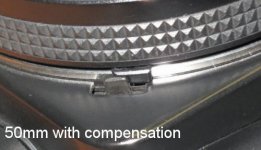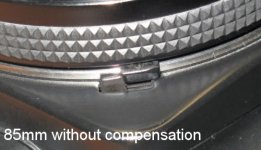monopix
Cam repairer
Some Contax camera service manuals mention lens theta compensation. Apparently, some Zeiss/Contax lenses have it and some don't. To indicate to the camera whether the lens has it or not, the switch that tells the camera if it has a AE or MM lens attached has an extra position that differentiates between lenses with or without theta compensation. There's nothing in the manuals that indicate what difference it makes to the camera (it's just an input to the CPU) and manually moving the switch through the positions appears to make no difference to the camera. Of the lenses I own, the 50mm f/1.7 and the 18mm f/4 have compensation, the others (25mm, 85mm and 135mm) don't.
So does anyone know what theta compensation is.
So does anyone know what theta compensation is.




